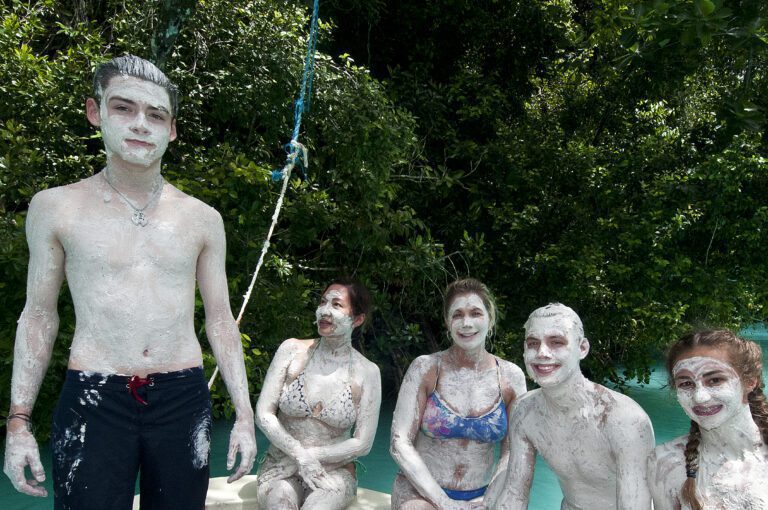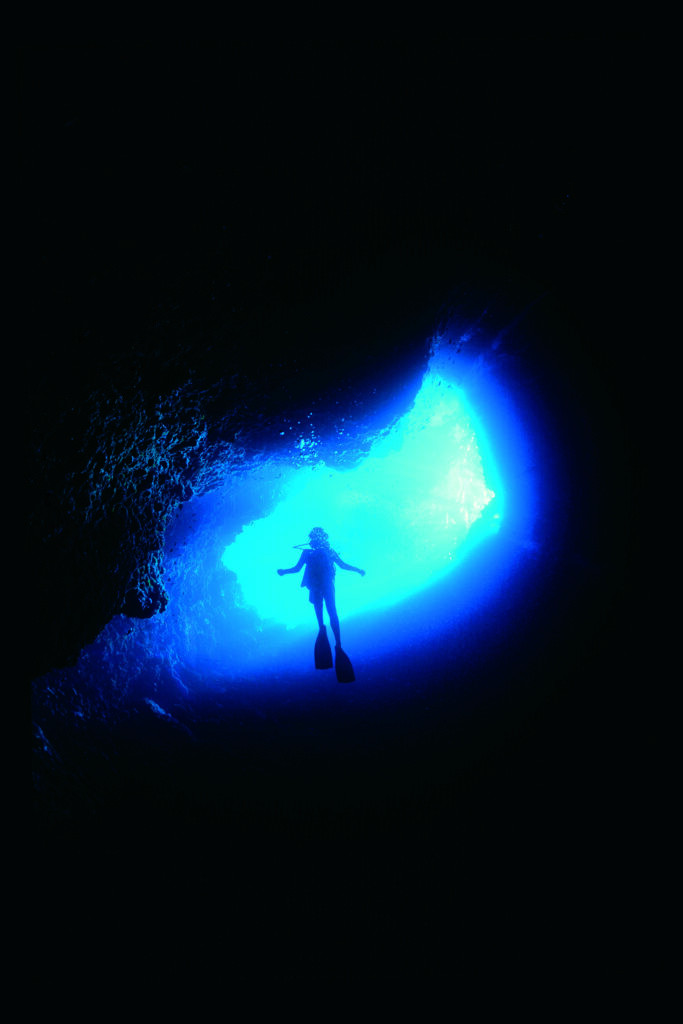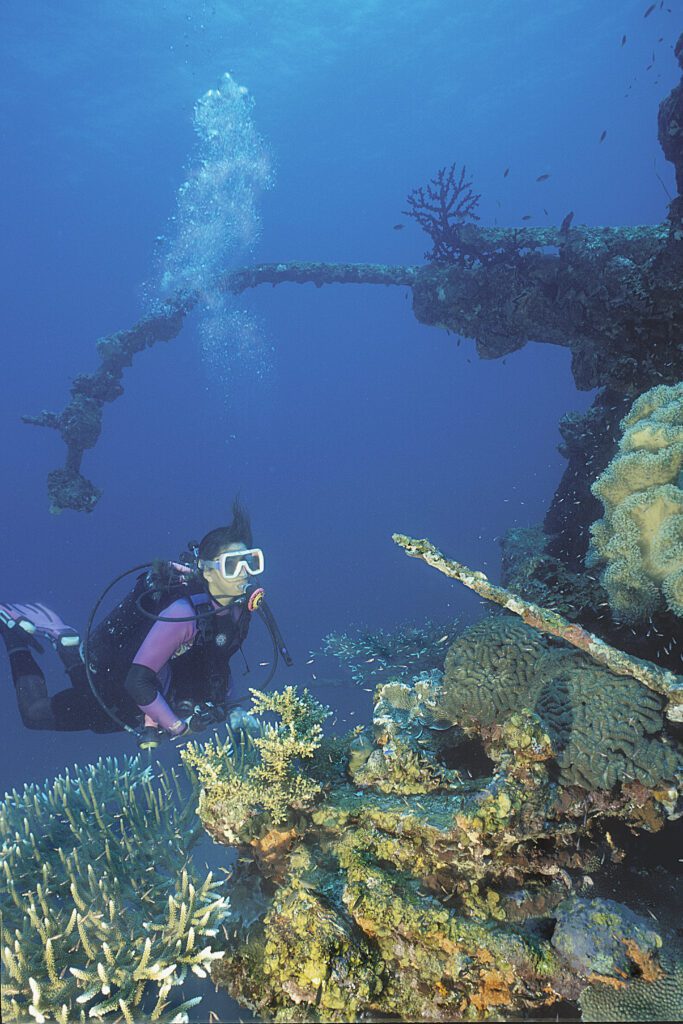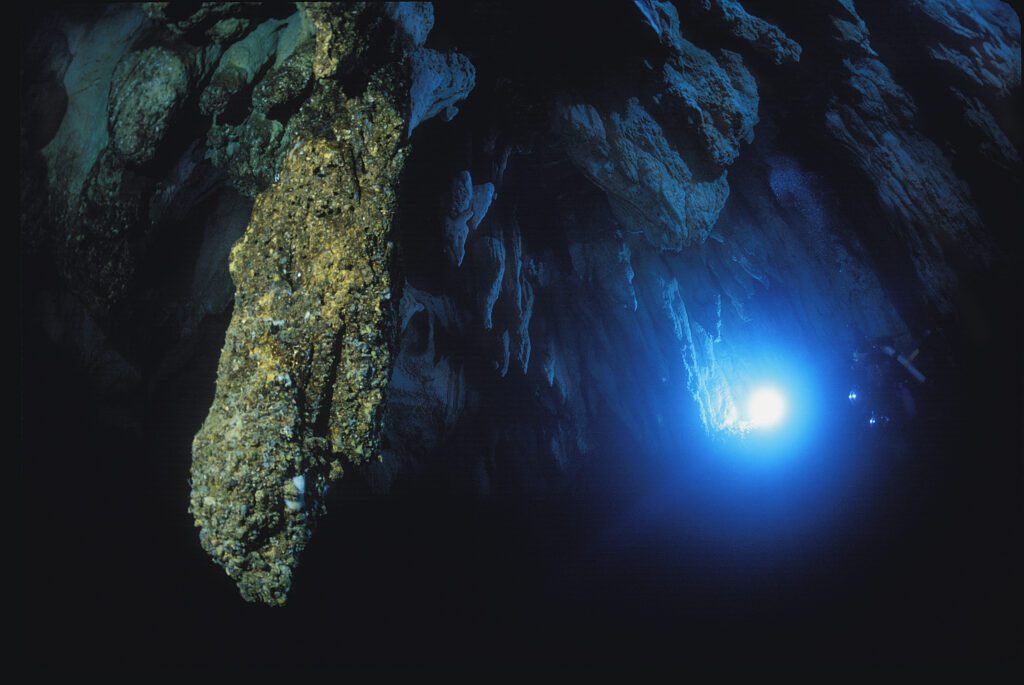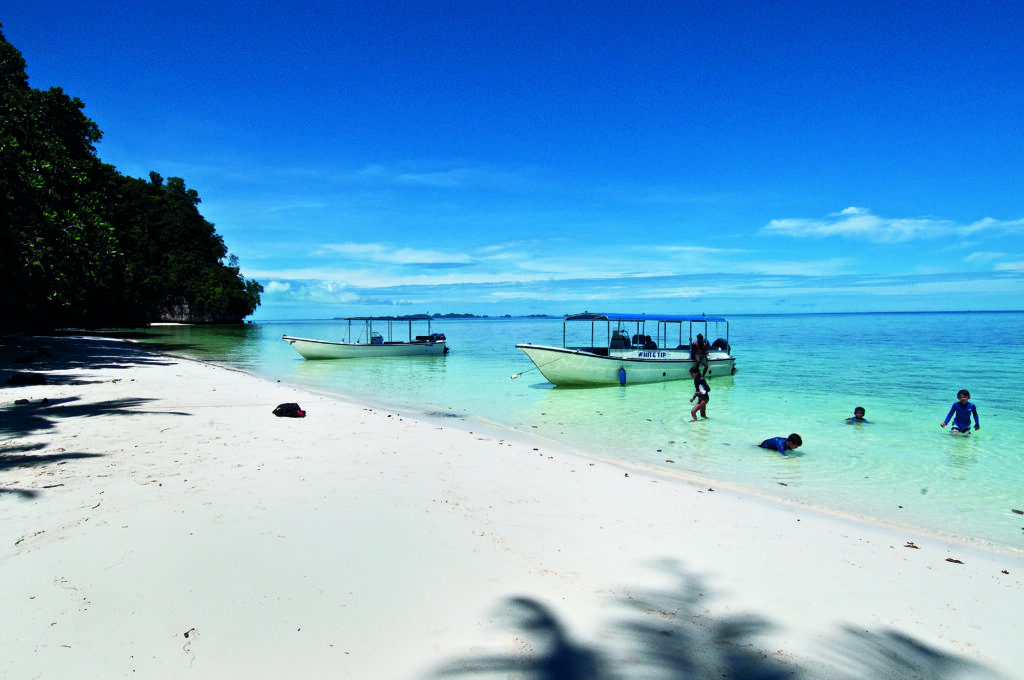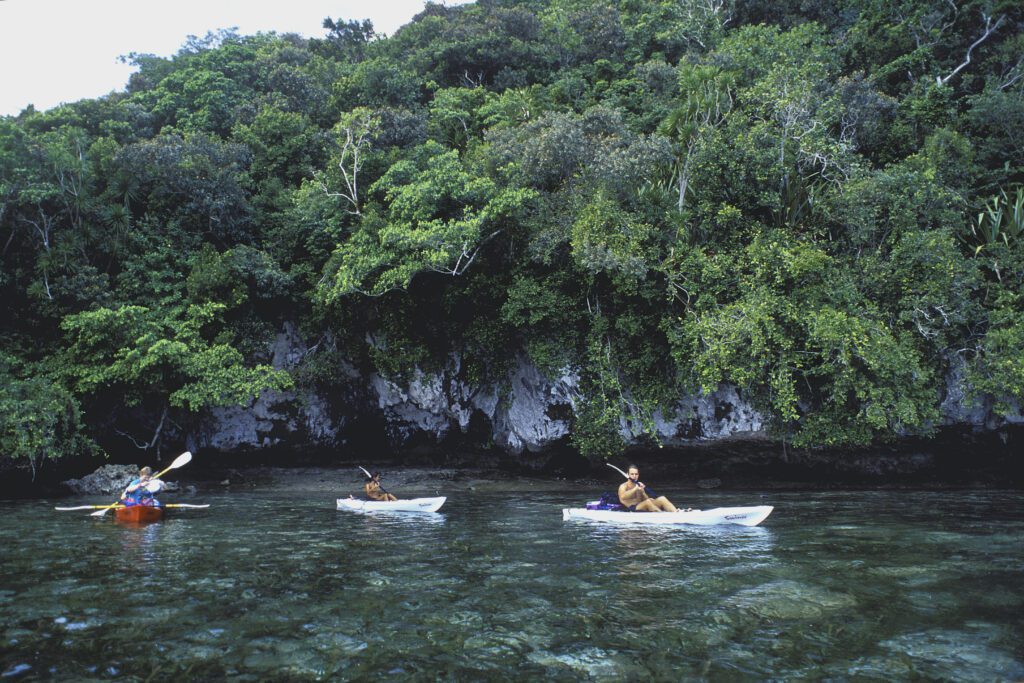AL HORNSBY finds that a Kids Sea Camp holiday in Palau is the perfect way for his family to indulge their passions – many of which involve scuba diving
I have had the good fortune to dive in Palau numerous times over the years, but one trip was particularly memorable. Rather than being off on an assignment, having to leave my family at home, my wife and then 10-year-old daughter were with me the Micronesian Islands in the western Pacific Ocean for a wonderful dive holiday. The trip was structured in a way that allowed each of us to enjoy it to the full.
Those with families whose own trips abroad might too often represent the divide between “family holiday“ and “diving holiday” might be wondering how my opening remarks could possibly be so. The easy answer is Kids Sea Camp (KSC).
KSC is the brainchild of PADI instructor Margo Peyton who, some years ago, as a single mum working for one of the USA’s best-known dive tour operators, found her personal diving largely put on hold, despite the many opportunities her job provided.
In talking to potential dive travellers every day, she came to realise that many families faced the same difficulties she did. No matter how much they enjoyed diving, figuring out how to take children along on an exotic dive trip could prove an apparently insurmountable obstacle. So, in the year 2000, Margo’s idea for Kids Sea Camp was born.
Now, in 15 leading dive locations, some 20 KSCs are conducted annually, each from one to two weeks long and with some 350 families attending.
For diving families it’s the most-enjoyable way imaginable to connect with each other and to create memories that will surelyl last a lifetime. Small children have day-care, young children learn snorkelling and SASY (Surface Air-Supplied Snorkelling for Youth – breathing from a small tank while completely buoyant on the surface), 7-10-year-olds learn PADI Seal Team, and 10-15-year-olds do their PADI Junior Open Water Diver – with full supervision, allowing the parents to go off diving as they choose.
Possibilities for all
Older children and non-diving parents can achieve their Open Water Diver certifications; certified divers dive day and night; and non-divers not interested in learning to dive go on snorkelling trips, sightsee, or simply relax at the always-nice resorts.
Existing divers who have grown rusty can take refreshers. And, with different boats available, there are ones for certified teens to dive together without mum and dad; boats for adults to dive together without their kids; and the ability for all to go together whenever they choose.
At each day’s end, there are arranged group dinners, often with photography, marine life, environmental and other dive-related presentations, as well as cultural and other entertainment.
It is such a delightful, seamless holiday that most families in our camp – people from all over the world – had been on three to five camps together over the years, their children having become firm friends and amazingly talented divers along the way.
And, because diving is the sum-total goal, each location’s diving schedule is designed to show off the best dive-sites the destination has to offer. In Palau, our trip had an incredible variety to experience.
Blue Corner
Palau's most popular dive-site, Blue Corner, is like an underwater three-ring circus. At the top of a steep outer wall but only 15m deep, divers remain stationary (it’s generally a reef-hook dive, on a current that runs along the wall) while a marine-life parade takes place, just over an arm’s length away.
Grey reef sharks and whitetips cruise by constantly, a huge school of blackfin barracuda is resident, and metre-long Napoleon wrasse are most always there to offer divers close encounters. On the reef, there are many grouper, snapper and turtles among the corals.
Just 50m northward along the wall, Blue Holes is another of Palau’s celebrated sites. On the reef-top near the drop-off, in 1-3m of water, four openings extend down into a large, softly lit chamber.
The steep sides are thick with soft and hard coral and gorgonians, with tropical reef fish of every description moving about the vertical surfaces. The bottom is at 40m, with a small exit onto the wall-face at 15m and a larger one at 27m. Outside, schools of barracuda and snapper congregate about the openings.
One of Palau’s most exciting dives, Ulong Channel, is a narrow, 15m-deep cut that runs through the reef near Ulong Island. It’s a wild ride in or out, depending on which way the tide is running.
Grey reef, blacktip and whitetip reef sharks cruise the passage, rays lie about the bottom, turtles are frequently seen and schooling mahogany snapper and spadefish move about.
On full-moon nights from April to July, huge numbers of grouper congregate for spawning, as marvellous a sight as any diver could ever want to see.
Another wonderful dive-site is in the German Channel passage to the outer reef. Mantas feed at the narrow entrance to the channel, and also congregate around a cleaning-station coral mound located on the white sand bottom.
Groups of huge mantas move in, hovering to be cleaned mainly by small wrasse and butterflyfish, then move off, only to circle back around, repeating the pattern over and over.
Divers and snorkellers alike, if they can remain calm and still, will witness these beautiful animals for many minutes as they carry out their cleaning behaviour.
Diving the wrecks
Another of Palau’s special dives provides a glimpse into the fierce fighting that took place in Palau during WW2. One of a number of Japanese ships sunk during the air raids of Operation Desecrate One in 1944, the Teshio Maru, a 98m Japanese army cargo ship, lies on its side on a 21m bottom, its port side at only 15m.
One of the most beautiful wrecks in Palau, it is covered in hard and soft coral growth, with many gorgonian and whip corals, and clouds of swirling fish that include barracuda, grouper, jack and fusiliers, in normally very clear water.
This huge wreck is intact, a fatal torpedo hole in the forward hold giving testimony to its violent demise. The holds contain ceramic plates, electric fans and personal effects of the crew; a deck-gun creates a dramatic scene at the stern. As a bonus, on the bottom at 15m not far away, a crashed Japanese Jake seaplane rests among the corals.
A different sort of dive is Chandelier Cave, located just minutes by boat from the dive-centres in Koror’s main harbour. The bottom of the cave is at 12m and the entrance at just 4m, and there are five chambers festooned with huge, hanging stalactites, four of them having large air-pockets at the top, and the fifth being completely above water.
It’s a beautiful, serene, well-lit place and very popular for closely supervised dives.
Beyond the huge list of great dive-sites, Palau is one of those ecological marvels where remarkable marine creatures might be seen any time, anywhere, and that includes whale sharks, Pacific dugongs (one of our boats got lucky), tiger sharks, whales, tuna, sailfish and more – not to mention having one of the world’s two known freshwater jellyfish lakes.
For divers and non-divers alike, there are also a number of land and boat-tour options available. These should not be missed, not only for the beautiful topography, flora and fauna to be seen,but also for the fascinating WW2 wreckage.
Island life
A very interesting hike is up Ngeruktabel Island to the site of an old German lighthouse. On this 45-minute walk many wartime relics can be seen, including bunkers, large artillery pieces and destroyed buildings.
At the island’s southern end, a small islet that can be reached only by boat contains a huge cavern. Inside are well-formed stalactites and stalagmites that glisten under a torch beam. Scattered throughout the cavern are hundreds of human bones; in ancient times, the grotto was used as a burial vault.
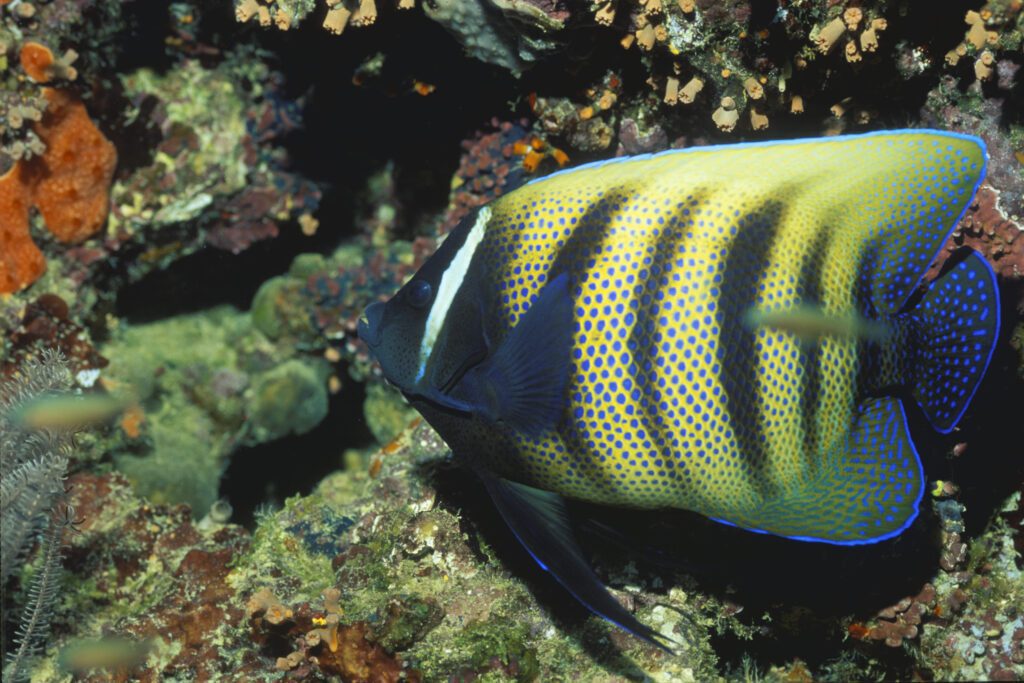
Another special site is at Ulong Island, which not only has a great beach, snorkelling and flocks of beautiful tropical birds but also many ancient artefacts scattered about.
Among the twisting passageways, Milky Way is a favourite haunt. Known for its therapeutic properties, it is claimed that bathing in the white limestone mud found on the shallow bottom will leave you looking 10 years younger. Even if it doesn’t, the sight of a boatload of divers coated in white mud from head to toe is priceless.
For our family, the trip to KSC in Palau was marvellous. For once, I got to take my wife and daughter on a dive-trip where, by design, there were no conflicts or required compromise decisions originating from differing diving-skill levels or holiday interests. Moreover, we were in an amazing location, and we all – especially my then-10-year-old daughter Juliet – made new friends and had an incredible time.
Getting to be with Juliet during her SEAL Team class and experience her joy at learning scuba for the first time was remarkable beyond description. Our next decision for the following year’s school breaks would be whether to return to Kids Sea Camp in Palau, or choose one of those other exotic locations. Tough call.
Sam’s Tours
With a multi-faceted programme such as that provided by Kids Sea Camp and the complexity (for the organisers) of the operation, KSC uses the services of established, highly rated PADI dive-centres. In Palau, that means Sam’s Tours.
The original Sam’s Tours was a dive, snorkelling and fishing company started by Sam Scott, from Washington. In 1996 he opened the dive-centre, now a PADI 5* IDC and one of Palau’s largest dive operations in Palau. With in-depth knowledge of its seas learnt over so many years of exploration, Sam’s Tours operates with a conservationist approcch to Palau’s marine environment and life.
Located in Malakal harbour, Sam’s Tours has a spacious open-air hub just steps from its 12 boats, with all facilities, including office, classrooms, equipment rentals, guest gear lockers, restaurant, bar and equipment set-up area extending off the central area.
A fleet of vans provides pick-ups from local hotels and resorts, and 12 languages are spoken among the staff. Divemasters and instructors are PADI-certified, and a full array of PADI courses, through instructor training, are offered.
Photographs by Al Hornsby
Also on Divernet: Scuba Diver’s extended family holiday to Aqaba, Diving with a new baby, Two and a half to Bandos, Baby diver, Baby diver: The Sequel – Let the diving begin!
